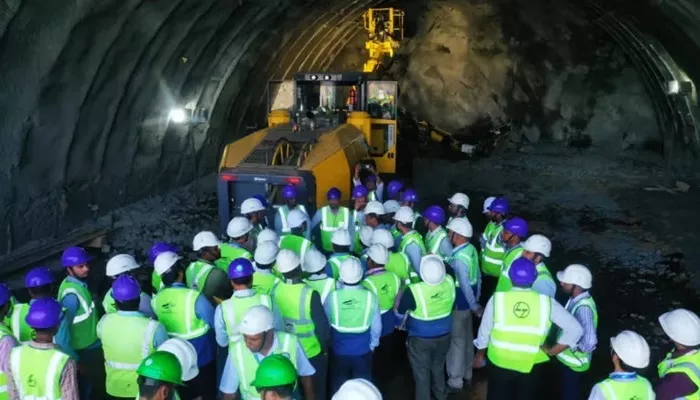Construction of India’s first undersea tunnel, part of the Mumbai-Ahmedabad High-Speed Rail (MAHSR) Corridor, also known as the bullet train project, is progressing as planned.
The MAHSR project is being developed by the National High-Speed Rail Corporation Limited (NHSRCL), a subsidiary of Indian Railways under the Ministry of Railways and the Government of India. The project incorporates Japan’s advanced Shinkansen technology, including rolling stock, signaling systems, and design standards, aligning with India’s “Make in India” initiative.
The 21-kilometer undersea tunnel will connect the underground bullet train station at Mumbai’s Bandra-Kurla Complex to Shilphata in Maharashtra. Of this, 16 kilometers will be constructed using tunnel boring machines, while the remaining 5 kilometers will employ the New Austrian Tunnelling Method (NATM). Notably, a 7-kilometer stretch beneath Thane Creek will mark India’s first undersea tunnel.
Railway Minister Ashwini Vaishnaw recently inspected the construction site and expressed satisfaction with the progress. He highlighted the advanced technology enabling two trains to pass through the tunnel simultaneously at speeds of 250 kilometers per hour. “The design ensures environmental considerations, such as proper ventilation and lighting, are addressed,” Vaishnaw stated.
He emphasized the broader impact of the project, stating, “This high-speed train is not just a transportation project but an economic integration initiative. It will boost urban development, enhance commuter productivity by reducing travel time, and elevate India’s infrastructure and economic growth.”
As of May 2024, significant milestones have been achieved, including the completion of the 394-meter Additionally Driven Intermediate Tunnel (ADIT) portal. Construction is also underway at Shaft 1 near Mumbai’s HSR station, Shaft 2 in Vikhroli, Shaft 3 in Savli near Ghansoli, and the tunnel portal at Shilphata.
The MAHSR Corridor spans 508 kilometers, linking Maharashtra and Gujarat. The bullet train will operate at speeds of up to 320 kilometers per hour, reducing travel time between Mumbai and Ahmedabad to just two hours and seven minutes. The route will include 10 stops: Thane, Virar, Boisar, Vapi, Bilimora, Surat, Bharuch, Vadodara, Anand, and Ahmedabad, with the journey terminating at Sabarmati.
This project is set to revolutionize intercity travel in the region, offering a faster, more efficient transportation option while driving economic and infrastructural development.

